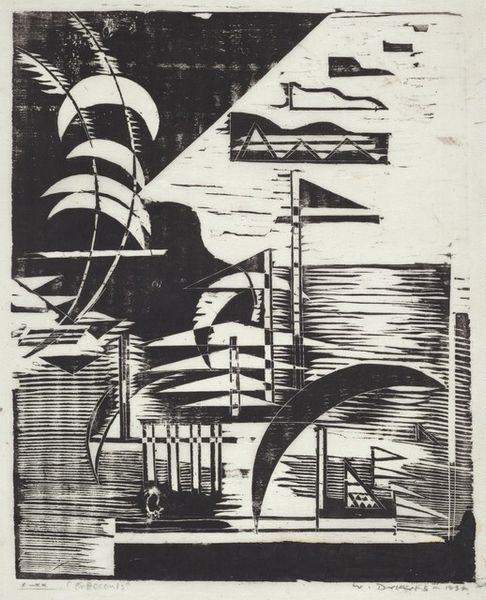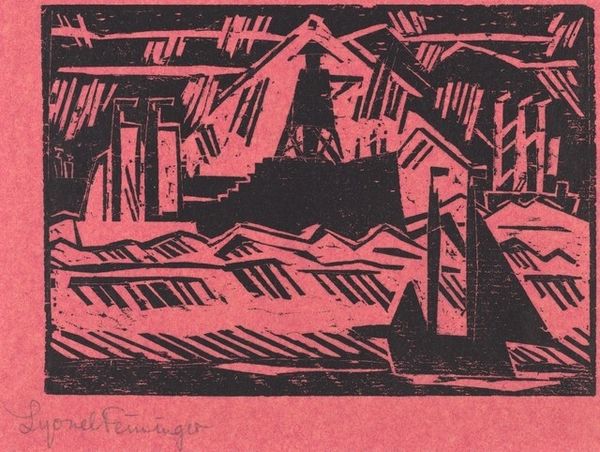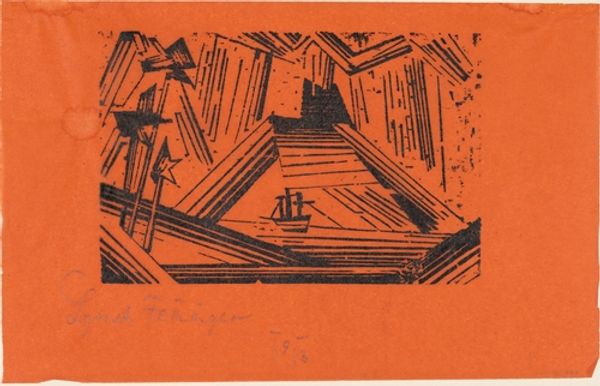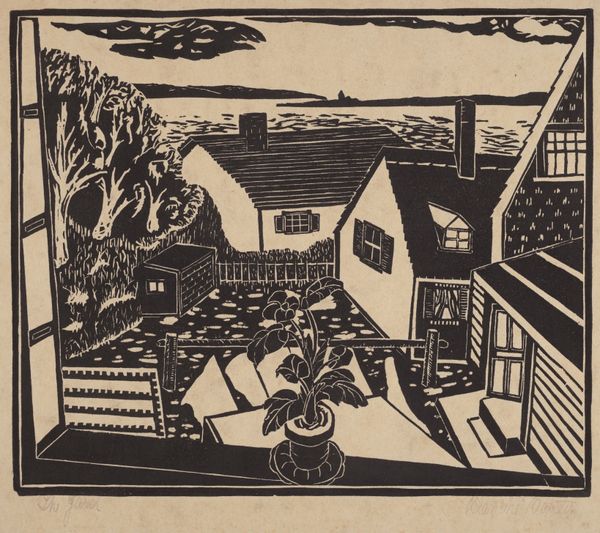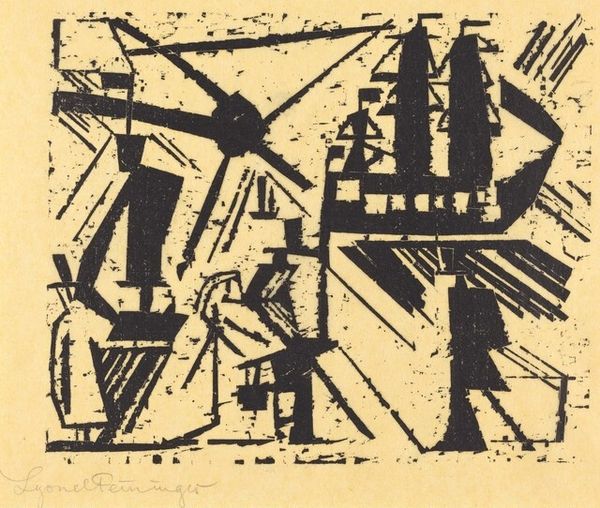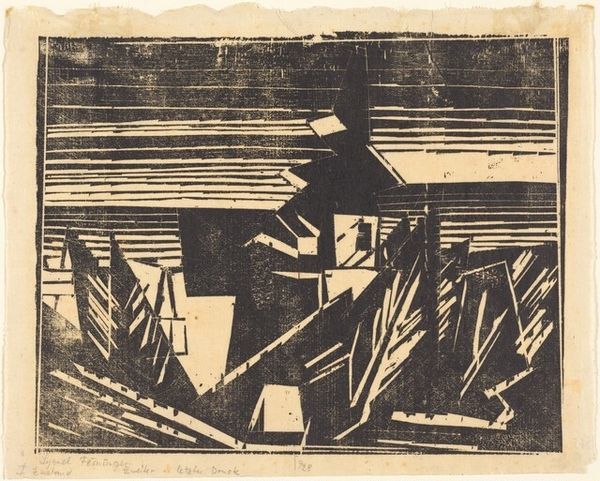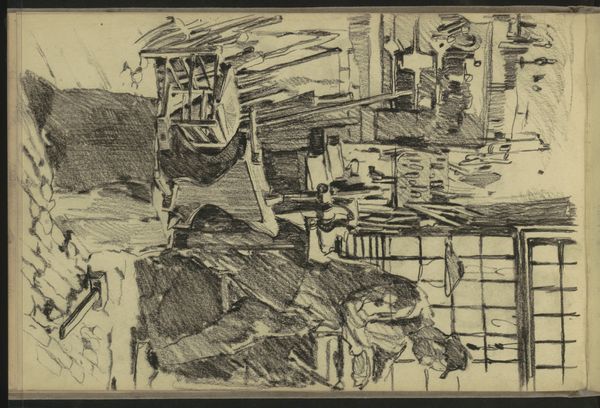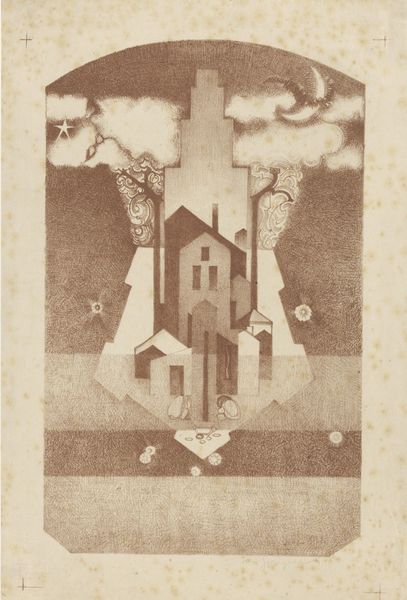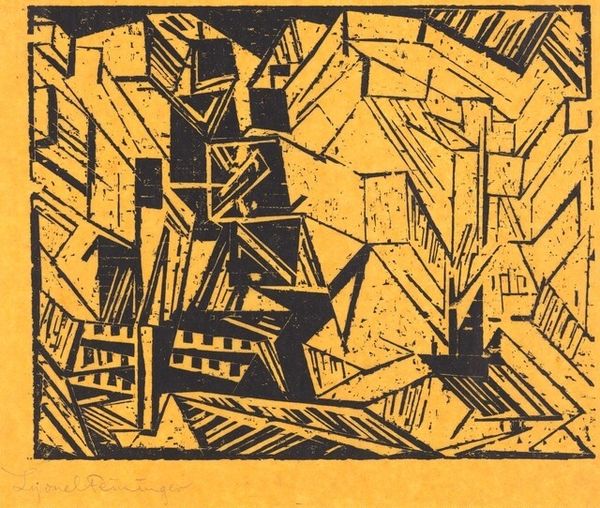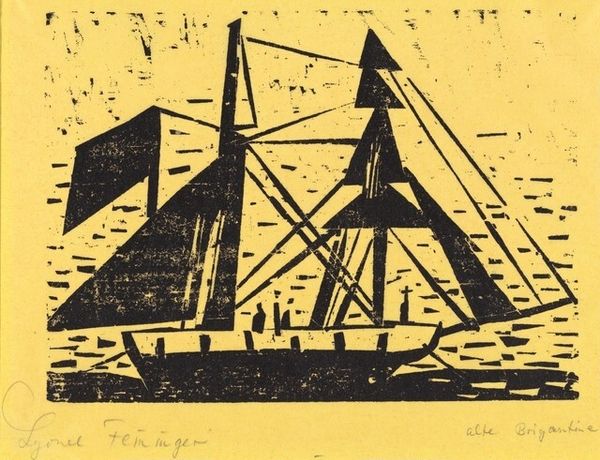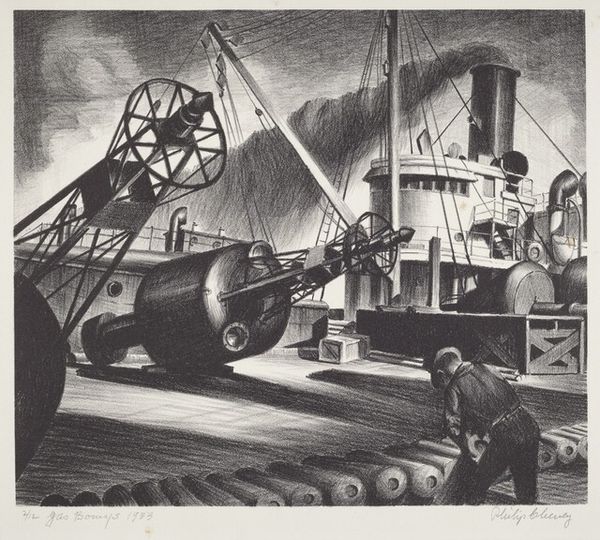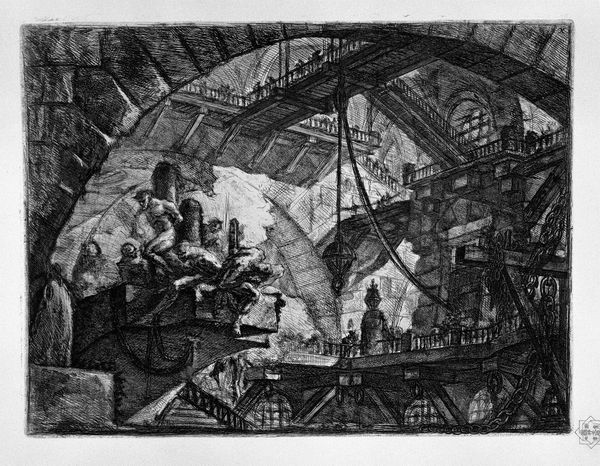
print, woodcut
# print
#
etching
#
geometric
#
expressionism
#
woodcut
#
abstraction
#
cityscape
Copyright: National Gallery of Art: CC0 1.0
Curator: Right, let's take a look at Lyonel Feininger’s “Marine,” created in 1918. It’s a striking woodcut print, one of several the artist produced. What do you make of it? Editor: It feels… precarious, almost. All those fractured planes, everything seems on the verge of collapsing, like a child’s tower of blocks teetering in the wind. Dark, but oddly optimistic at the same time. Curator: Interesting observation. The precariousness might stem from the material realities of the printmaking process itself. Think about the labor involved: the careful carving of the woodblock, the registration of the print, the material qualities of the ink and paper. Each step a site of potential slippage, demanding precise execution. Editor: Yes, and the final print itself emphasizes the medium! Look at the thick black ink. He allows for all those little inconsistencies, celebrates the inherent roughness, it feels honest and kind of freeing in contrast to some meticulous styles. I'm just riffing here, but he seems to make no attempt to disguise it. Curator: Precisely. The contrast is certainly key, between the hard labor involved, and this freeing interpretation of it as shown by the forms, geometric shapes suggesting ships and structures without definitively rendering them. What might this abstraction suggest about the relationship between industrial production, nature, and society? Editor: I suppose one reading is a critique. By distorting reality he perhaps reflects the destructive aspect of industry—dark waters threatening our vessels, fractured human presence—or he’s simplifying the world, seeing everything distilled into essential form! That feels more in tune with Feininger to me, given other works of his that are equally as reductive, stylistically. Curator: That connects interestingly with the broader artistic movements of the time, right? Feininger, with his links to the Bauhaus, sought to integrate art and craft, questioning traditional hierarchies and envisioning new social possibilities for art's function within the production and construction of society, with simplified design and structure. Editor: See, for me, I connect to a deep sense of calm that I get from art like this, maybe it’s those memories of the sea... Feininger takes a complex harbor, simplifies it. It becomes serene through pure shapes and light. A moment held and shared. Curator: Yes, exactly. So perhaps the Marine, in its abstraction and materiality, holds both a critique of industrial modernity and an enduring connection to something elemental within human experience. A lot of food for thought, really. Editor: I'm so very happy now.
Comments
No comments
Be the first to comment and join the conversation on the ultimate creative platform.
